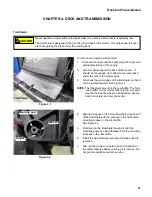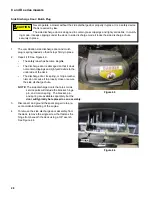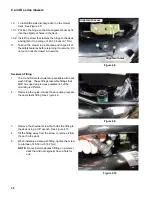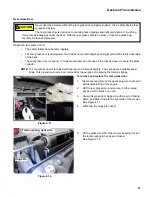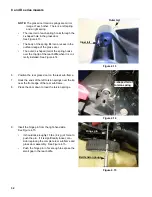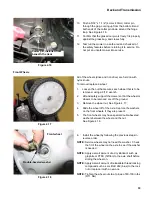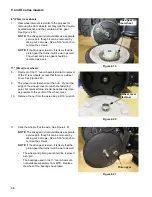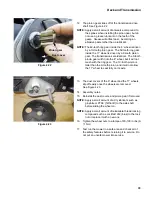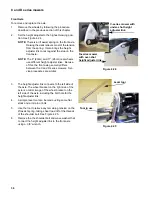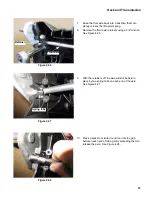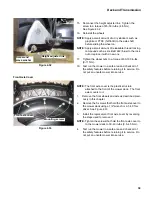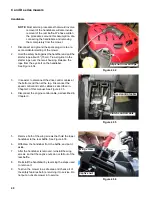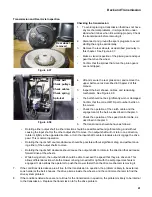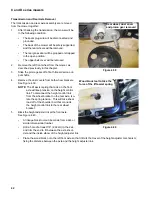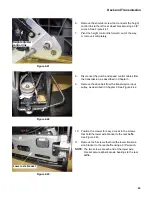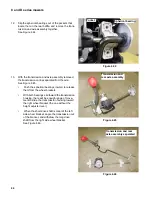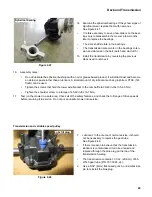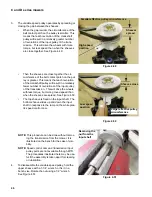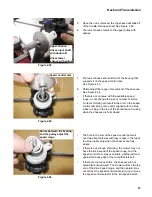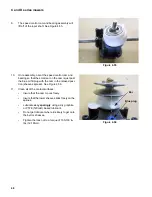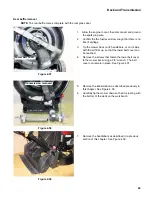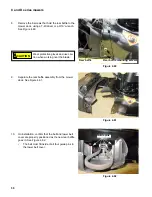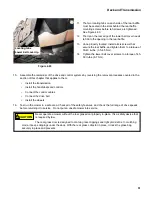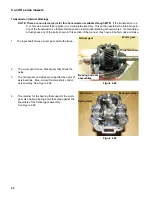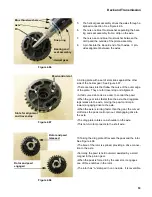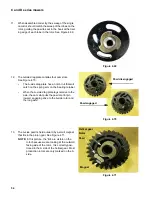
Deck and Transmission
41
Transmission and Rear Axle Inspection
Checking the transmission
:
1. To avoid replacing a transmission that does not have
any mechanical problems, it is important to under-
stand what it does when it is working properly. Check
the transmission before removing it.
2.
Disconnect and ground the spark plug wire to avoid
starting the engine accidentally.
3.
Remove the rear wheels, as described previoulsy in
this chapter. See Figure 4.37.
•
Make a visual inspection of the pinion gear and spur
gear that drive the wheel.
•
Confirm that the splines that drive the pinion gears
are not stripped.
4.
Lift and secure the rear grass door, and remove the
upper belt cover as described in Chapter 2 of this
manual.
5.
Inspect the belt, sheave, cables, and tensioning
mechanism. See Figure 4.38.
•
The belt should not be significantly worn or damaged.
•
Confirm that the correct MTD part number belt is on
the mower.
•
Check the operation of the clutch cable and the
engagement of the belt, as described in chapter 3.
•
Check the operation of the speed control cable, as
described in chapter 3.
6.
The transmission should behave as follows:
•
Rotating either output shaft in either direction should be possible without significant drag, and without
causing the input shaft or the other output shaft to move. If an output shaft will not turn in one direction,
rotate it slightly in the opposite direction, or turn the input shaft counter-clockwise to discngage the drive
pawl. This is normal operation.
•
Rotating the input shaft counter-clockwise should be possible without significant drag, and without caus-
ing either of the output shafts to move.
•
Rotating the input shaft clockwise should cause the output shafts to rotate in the direction that will cause
forward drive at the wheels.
•
While being driven, the output shafts should be able to exceed the speed that they are driven at. This
allows differential action while the mower is being turned left or right with the self-propel mechanism
engaged. It also allows the operator to push the mower faster than the drive mechanism is moving it.
7.
If the conditions listed above are all true for the transmission in question, the problem is likely to be external.
Look harder at the belt, sheaves, the drive pinions inside the wheels, and the control mechanism to find the
drive system problem.
8.
If the conditions listed above are not all true for the transmission in question, the problem is likely to be internal
to the transmission. Replace the transmission to fix the drive problem.
Figure 4.37
Rear wheel
removed
Figure 4.38
Check belt
Check pulleys
Check cables
Check spring
Spin-test

